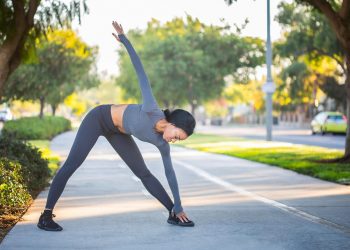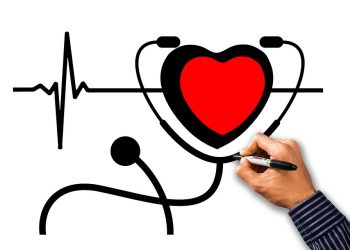Trypophobia is a little-known yet surprisingly common condition that affects many people worldwide. It triggers an intense discomfort or fear response to clustered holes or patterns, leaving those affected feeling unsettled or even physically ill. Understanding Trypophobia is vital—not only to recognize the signs but also to find effective ways to manage and alleviate its effects.
Contents
What Is Trypophobia and Why It Matters
At its core, Trypophobia is the fear or aversion to clusters of small holes or bumps. While it’s not officially classified as a phobia by medical standards, its impact on emotional and physical well-being can be significant. People with Trypophobia might experience anything from mild unease to full-blown panic attacks when confronted with triggering images or objects.
This condition matters because it affects daily life—from avoiding certain foods like honeycombs or lotus seed pods to steering clear of natural patterns like coral or sponges. Understanding Trypophobia can help sufferers regain control and reduce anxiety.
What Triggers Trypophobia?
The triggers for Trypophobia are diverse but generally revolve around visual patterns featuring:
-
Clusters of small holes or bumps, often irregularly spaced
-
Natural objects such as seed pods, animal skin (like frogs or snakes), coral, and honeycombs
-
Man-made items with similar hole patterns, such as aerated surfaces or bubble wrap
It’s not the objects themselves but the pattern of holes that provokes the reaction. In many cases, the intensity varies among individuals.
What Causes Trypophobia?
Experts are still researching the exact causes of Trypophobia, but several theories provide insight:
-
Evolutionary Perspective: Some researchers suggest that Trypophobia might be linked to a natural survival mechanism. Patterns resembling parasites, infections, or dangerous animals may trigger an instinctive avoidance response.
-
Neurological Responses: Studies indicate heightened brain activity in areas responsible for processing fear and disgust when viewing triggering images.
-
Learned Behavior: Past traumatic or negative experiences related to certain visual stimuli may reinforce the fear response.
Despite these hypotheses, more research is needed to fully understand the root causes.
Common Symptoms of Trypophobia
The symptoms vary depending on the individual but often include:
-
Intense feelings of disgust or fear
-
Itching or crawling sensations on the skin
-
Nausea or dizziness
-
Panic attacks, including rapid heartbeat and sweating
If you notice these symptoms in response to clustered patterns, it’s likely you are experiencing Trypophobia.
How to Manage and Treat Trypophobia
While no official cure exists, many strategies can help reduce Trypophobia symptoms:
1. Gradual Exposure Therapy
Slow, controlled exposure to triggering images or objects can help desensitize the brain over time. This method is often guided by a professional therapist.
2. Mindfulness and Relaxation Techniques
Practicing breathing exercises, meditation, or progressive muscle relaxation can reduce anxiety when exposure is unavoidable.
3. Cognitive Behavioral Therapy (CBT)
CBT helps challenge and change negative thought patterns related to Trypophobia triggers, fostering healthier reactions.
4. Avoidance of Triggers
While avoidance isn’t a long-term solution, identifying and steering clear of known triggers can prevent discomfort in daily life.
For more information on treatment options, the American Psychological Association offers reliable resources on managing phobias and anxiety disorders.
Real-Life Relevance: Stories from Those Affected
Many individuals have shared how Trypophobia impacts their lives—from avoiding foods like lotus root to having panic reactions when seeing patterned surfaces. Recognizing this condition helps reduce stigma and encourages seeking support.
Expert Tips for Living with Trypophobia
-
Keep a journal of your triggers and symptoms to identify patterns.
-
Discuss your experiences with a qualified mental health professional.
-
Use calming apps or music during exposure to triggering environments.
For guidance on coping with anxiety and phobias, the National Institute of Mental Health provides expert advice and treatment options.
Practical Takeaways
-
Understand that Trypophobia is a common reaction and you’re not alone.
-
Learn and practice anxiety management techniques.
-
Seek professional help if symptoms interfere with your daily life.
The Mayo Clinic offers thorough information about phobias and their management.
Bottom Line:
Trypophobia is more than just discomfort; it’s a real psychological condition that can affect daily living. By understanding its triggers, causes, and treatments, you can regain control and reduce the impact it has on your life.
If you experience symptoms of Trypophobia, consider seeking professional help and exploring coping strategies to improve your quality of life.
FAQs
What is the difference between Trypophobia and a typical fear?
Trypophobia is a specific aversion to clustered holes, often accompanied by physical symptoms, while a typical fear might not include such intense physiological reactions.
Is Trypophobia recognized by medical professionals?
Currently, Trypophobia is not officially classified as a phobia but is increasingly acknowledged by mental health experts due to its prevalence.
Can Trypophobia be cured?
There is no official cure, but therapy and coping techniques can significantly reduce symptoms.
Remember, understanding your fears is the first step toward overcoming them. Take charge of your well-being—one small step at a time.
Get Your FREE Natural Health Guide!
Subscribe now and receive our exclusive ebook packed with natural health tips, practical wellness advice, and easy lifestyle changes — delivered straight to your inbox.















